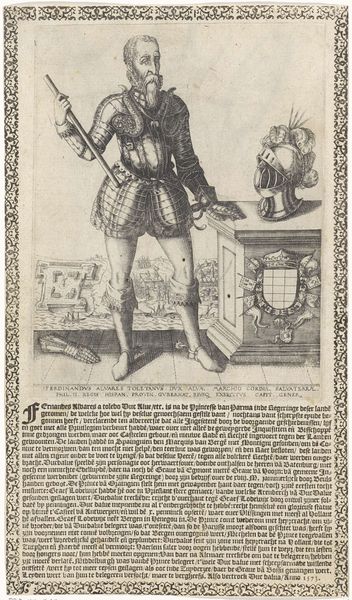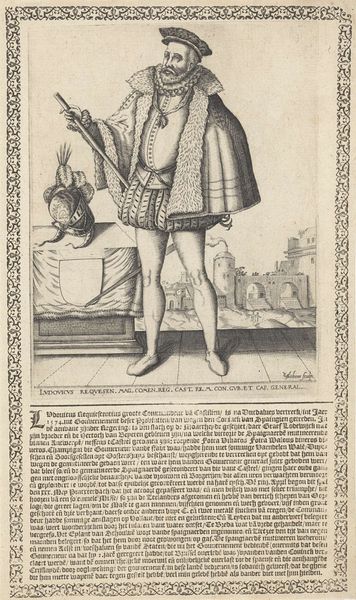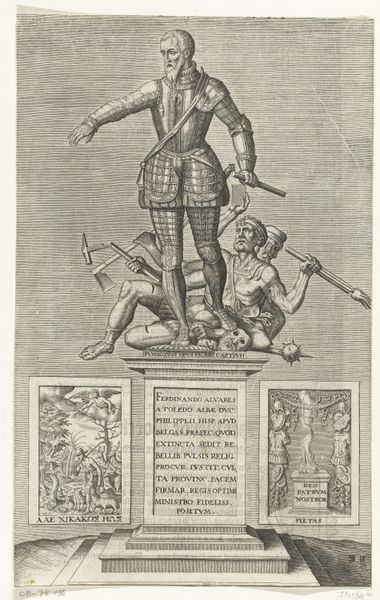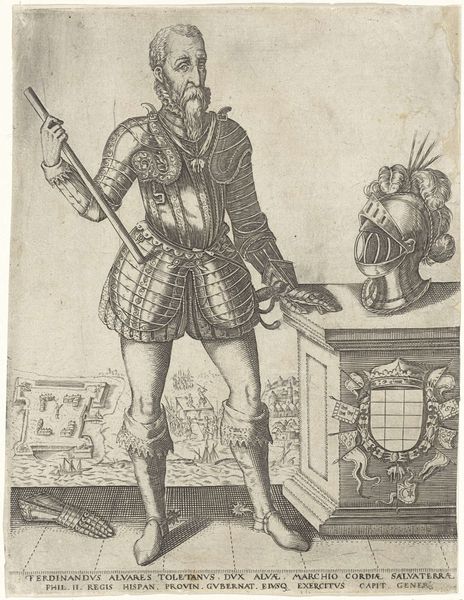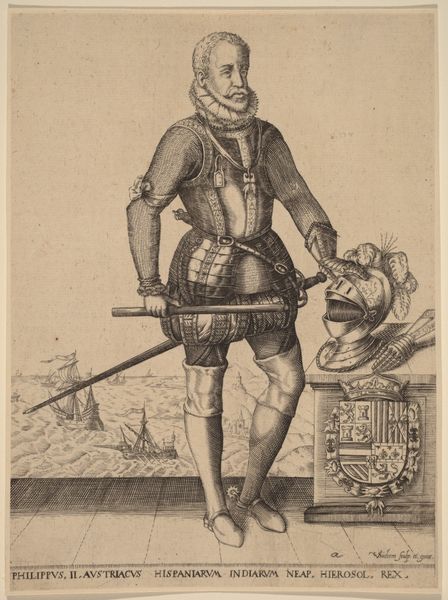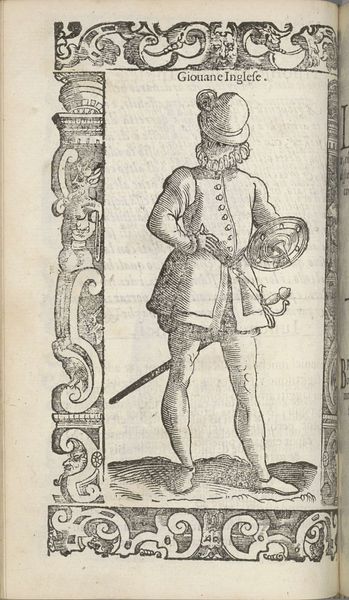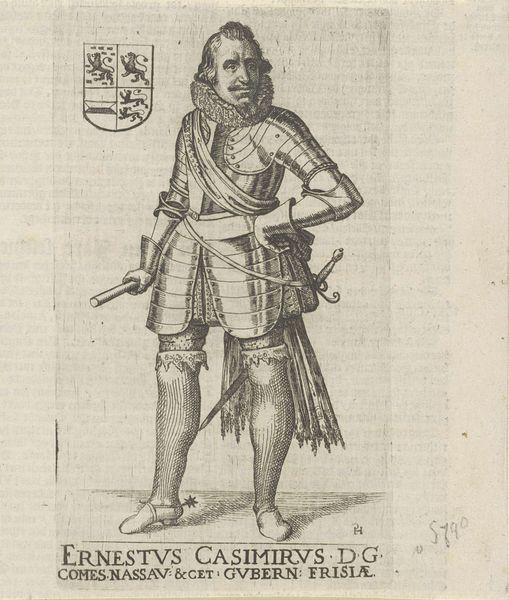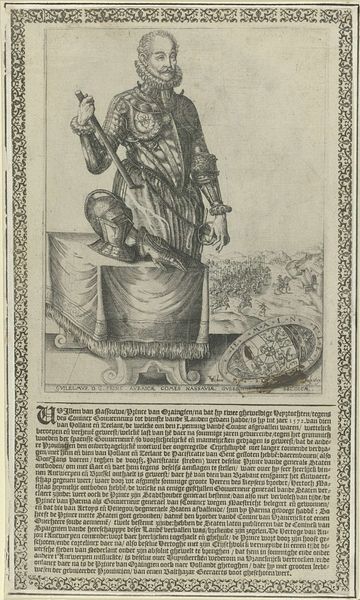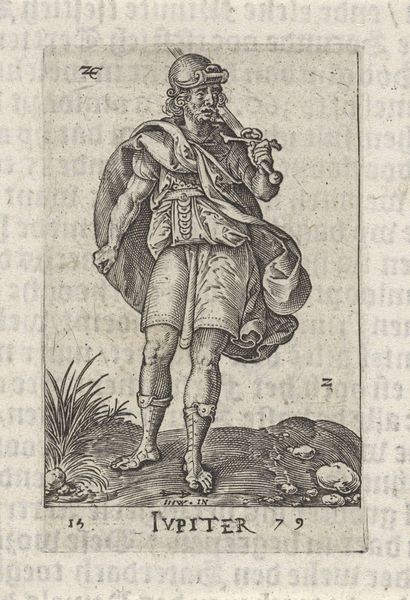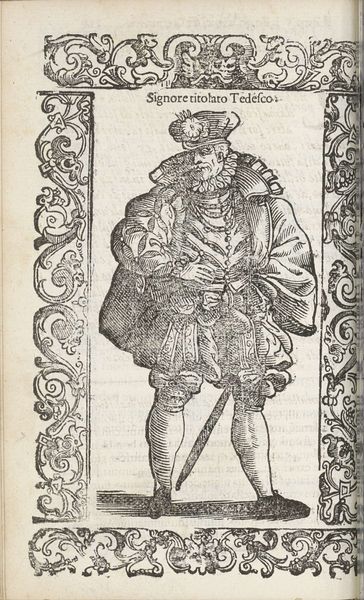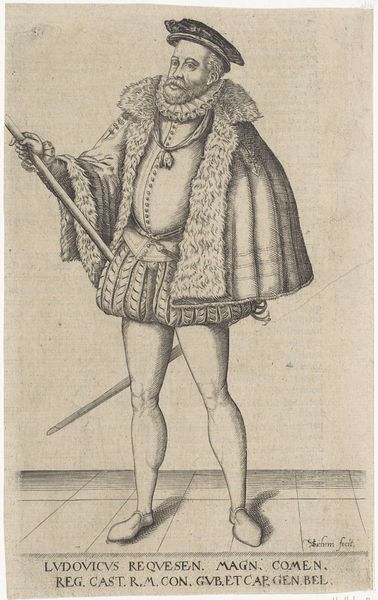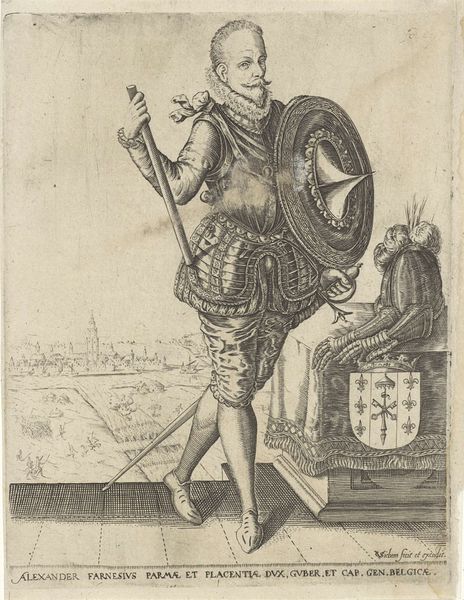
print, engraving
#
portrait
#
baroque
# print
#
old engraving style
#
11_renaissance
#
history-painting
#
engraving
#
intricate and detailed
Dimensions: height 146 mm, width 188 mm, height 295 mm, width 171 mm
Copyright: Rijks Museum: Open Domain
Curator: Here at the Rijksmuseum, we have an intriguing engraving titled "Portret van Filips II, koning van Spanje," or "Portrait of Philip II, King of Spain," created before 1611 by Christoffel van Sichem I. Editor: Immediately, it strikes me as having a formidable, almost somber tone. It's intricate and quite detailed, especially the king’s armour. He seems imposing but somehow... detached. Curator: Absolutely. This portrait, typical of the Baroque style and made through the medium of print, showcases the meticulous craft of engraving. Note the attention to the textures—the metal of the armour, the lace collar, even the king’s beard. These were all painstaking processes, requiring great skill and time. Editor: There's also a story here about power, right? The regal posture, the ships on the water behind him – hinting at naval dominance – plus his helmet bearing a shield; all communicate authority and ambition. The engraving, I'd venture, wasn't just a representation, but a political statement, one crafted for consumption and dissemination. Curator: Precisely. Engravings like these played a significant role in shaping the image of rulers, circulating their likeness and projecting power across geographical boundaries. Also observe the decorative frame surrounding the image and long passages of Dutch text: elements indicative of print's function in wider society during the Renaissance. Editor: It’s curious, isn't it, how such a controlled, calculated image, made with so much intention, can still evoke such a raw and multifaceted reaction centuries later? There’s a kind of vulnerability hiding behind the show of force. Curator: I find the power of material culture in revealing such complex histories truly remarkable. This print invites questions about the manufacturing and dissemination of such material during the 16th and 17th centuries. Editor: I suppose the charm of these old portraits lies in finding glimmers of humanity behind the veneer of power. A dialogue across centuries captured by craft.
Comments
No comments
Be the first to comment and join the conversation on the ultimate creative platform.

